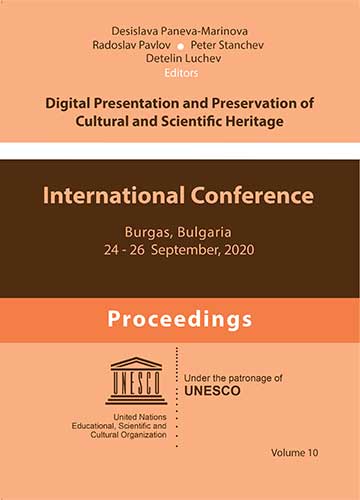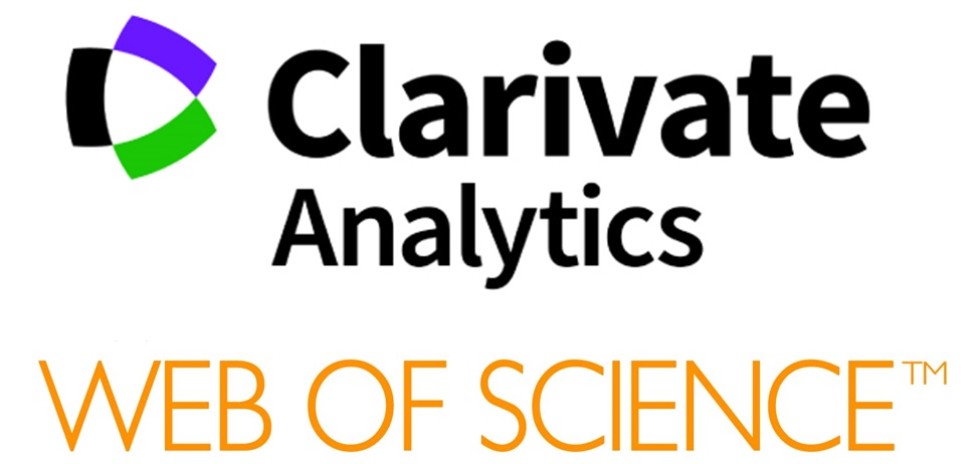Digital Art Management in Bulgaria
DOI:
https://doi.org/10.55630/dipp.2025.15.18Keywords:
Digital Transformation, Art Management, ArtAbstract
The article presents a study analyzing the attitudes of managers regarding the digitalization of art organizations. The results of an empirical survey are provided, showing the desire for digitalization within these organizations. The research focuses on the digitalization of art management processes and presents a prototype for digital art management. The relevance of the prototype is expressed in the fact that this area remains under-researched and requires further attention and development, especially in the context of rapidly evolving technologies and the growing needs of the contemporary art sector.References
Alunni, L., & Llambías, N. (2018). Explorando la transformación digital desde adentro [Exploring digital transformation from within].
Bearman, D., & Trant, J. (1998). Authenticity of digital resources: Towards a statement of requirements in the research process. D-Lib Magazine. https://doi.org/10.1045/july98 -bearman
Berman, S. J. (2012). Digital transformation: Opportunities to create new business models. Strategy & Leadership, 40 (2), 16–24. https://doi.org/10.1108/10878571211209314
Bican, P. M., & Brem, A. (2020). Digital business model, digital transformation, digital entrepreneurship: Is there a sustainable “digital”? Sustainability, 12 (13), 5239. https://doi.org/10.3390/su12135239
Blockchain in the art world. (n.d.). Finance Strategists. https://www.financestrategists.com/wealth-management/blockchain/blockchain-in-the-art-world/
Bock, L. (2015). La nueva fórmula del trabajo: Revelaciones de Google que cambiarán su forma de vivir y liderar [Work rules!: Insights from inside Google that will transform how you live and lead]. Conecta.
Depocas, A., Ippolito, J., & Jones, C. (2003). Permanence through change: The variable media approach. Guggenheim Museum.
Dowden, R. (2020). The digital artist’s handbook. Routledge. https://doi.org/10.4324/9780429506765
Downes, L., & Nunes, P. (2014). Big bang disruption: Strategy in the age of devastating innovation. Penguin.
Giannini, T., & Bowen, J. P. (Eds.). (2019). Museums and digital culture: New perspectives and research. Springer. https://doi.org/10.1007/978 -3-319 -97457 -6
Gray, J., & Rumpe, B. (2017). Models for the digital transformation. Software & Systems Modeling, 16, 307– 308. https://doi.org/10.1007/s10270-017-0596 -7
Grover, V., & Kohli, R. (2013). Revealing your hand: Caveats in implementing digital business strategy. MIS Quarterly, 37 (2), 655–662.
José Manuel Montero Guerra, I. D.-d.-V., & Mendez-Suárez, M. (2023). The impact of digital transformation on talent management. Technological Forecasting and Social Change, 188, 122291. https://doi.org/10.1016/j.techfore.2022.122291
Kane, G. C., Palmer, D., Nguyen-Phillips, A., Kiron, D., & Buckley, N. (2017). Achieving digital maturity. MIT Sloan Management Review, 59 (1), 1– 9.
Kazashka, T., Madanska, S., Tabakova-Komsalova, V., Djeneva, D., & Nedelchev, I. (2024). Development of an ontology of Bulgarian dance folklore. Digital Presentation and Preservation of Cultural and Scientific Heritage, 14, 265–272. https://doi.org/10.55630/dipp.2024.14.25
Kazashka, V., Kolev, V., & Ruseva, M. (2018). Plovdiv – art organizations and their management profile. Academy of Music, Dance and Fine Arts.
Kiron, D., & Spindel, B. (2019). Rebooting work for a digital era. MIT Sloan Management Review, 0, 1–10.
Kotarba, M. (2018). Digital transformation of business models. Foundations of Management, 10 (1), 123–142. https://doi.org/10.2478/fman -2018 -0011
Mazzone, M., & Elgammal, A. (2019). Art, creativity, and the potential of artificial intelligence. Arts, 8 (1), 26. https://doi.org/10.3390/arts8010026
Matt, C., Hess, T., & Benlian, A. (2015). Digital transformation strategies. Business & Information Systems Engineering, 57, 339 – 343. https://doi.org/10.1007/s12599 -015-0401-5
Morakanyane, R., O'Reilly, P., McAvoy, J., & Grace, A. (2020). Determining digital transformation success factors. In Proceedings of the 53rd Hawaii International Conference on System Sciences (pp. 4356-4365). HICSS. https://doi.org/10.24251/HICSS.2020.532
Osterwalder, A., & Pigneur, Y. (2010). Business model generation: A handbook for visionaries, game changers, and challengers. John Wiley & Sons.
OpenSea. (n.d.). https://opensea.io/
Paul, C. (2015). Digital art (3rd ed.). Thames & Hudson.
Rarible. (n.d.). https://rarible.com/
Robbins, S. P. (2004). Comportamiento organizacional [Organizational behavior]. Pearson Educación.
Rinehart, R., & Ippolito, J. (2014). Re-collection: Art, new media, and social memory. The MIT Press. https://doi.org/10.7551/mitpress/7975.001.0001
Rothenberg, J. (1999). Avoiding technological quicksand: Finding a viable technical foundation for digital preservation. Council on Library and Information Resources.
Serada, A. (2022). NFTs and the art world: How blockchain technology is changing the art market. Journal of Cultural Economics. https://doi.org/10.5070/LR829158940
Soule, D. L., Puram, A., Westerman, G. F., & Bonnet, D. (2016). Becoming a digital organization: The journey to digital dexterity. SSRN. https://doi.org/10.2139/ssrn.2697688
Teubner, R. A. (2013). Information systems strategy: Theory, practice, and challenges for future research. Business & Information Systems Engineering, 5, 243–257. https://doi.org/10.1007/s12599 -013-0279 -z
Wang, Q., et al. (2021). Non-fungible token (NFT): Overview, evaluation, opportunities and challenges. arXiv. https://arxiv.org/abs/2105.07447
Wrede, M., Velamuri, V. K., & Dauth, T. (2020). Top managers in the digital age: Exploring the role and practices of top managers in firms’ digital transformation. Managerial and Decision Economics, 41 (8), 1549 –1567. https://doi.org/10.1002/mde.3202
Downloads
Published
How to Cite
Issue
Section
License
Copyright (c) 2025 Digital Presentation and Preservation of Cultural and Scientific Heritage

This work is licensed under a Creative Commons Attribution-NonCommercial 4.0 International License.



